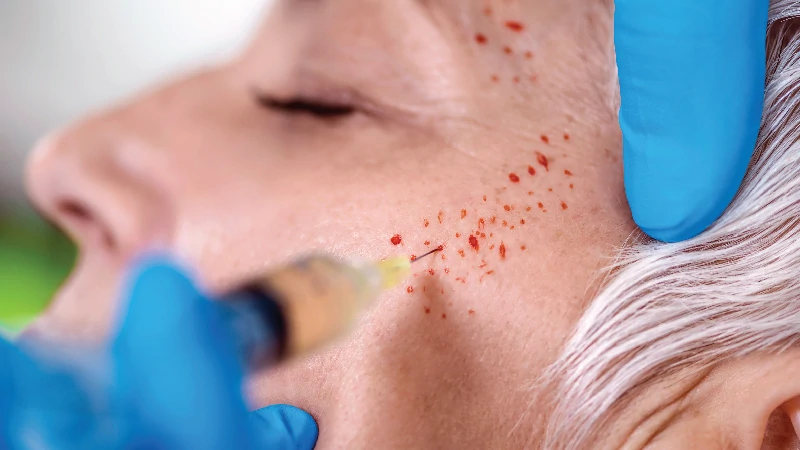
PRP for Vampire Facelift in Bangalore
PRP for face also know as Vampire Facelift. This involves drawing a small amount of a patient’s blood, spinning it in a machine called a centrifugal machine, in order to isolate the platelet-rich plasma from the red and white blood cells. Re-injecting the activated platelets into the patient’s face to produce brighter and smoother skin. It’s a non-surgical treatment that relies on the body’s own, natural healing mechanisms.
FDA has approved the use of growth factors for many medical procedures and many people are getting these injections to help them in repairing conditions like Tennis Elbow, Arthritis and Tendonitis.
Only a professional and a fully-trained medical practitioner should perform the procedure as it involves some risks (though rare) which cannot be overlooked. Dr. Ashwin M Budihal is a Bangalore-based cosmetic and Dermatosurgeon, having years of experience in PRP for the face. He is an ideal cosmetic and Dermatology practitioner in the current times.
How Vampire Facelift helps
- Reduces Pigmentation
- Lightens the Scars
- Tightens the skin and closes dilated pores
- Skin looks Younger and rejuvenated
- Reduces wrinkles
Uses of vampire Facelift
- The platelet rich plasma is injected after applying a local anesthetic cream, resulting in a near painless application. Platelet rich plasma body’s own concentrated growth factors which helps to rejuvenate the face in several ways.
- Increases the blood flow to the skin, resulting in healthier and flawless skin.
- Increases new cell formation for skin renewal.
- Causes production of new collagen, the major component of facial skin. New collagen formation is decreased in aging process.
- Activates the stem cells in the skin, resulting in the generation of new, younger looking skin.
- A quick, long lasting and an effective procedure.
Post Procedure Care after Vampire Facelift
- Avoid sun exposure
- Moisturize the Skin
- Drink plenty of water
- Avoid makeup for a day
- Avoid hot water for a day
- Ice on and off to reduce swelling, if any
